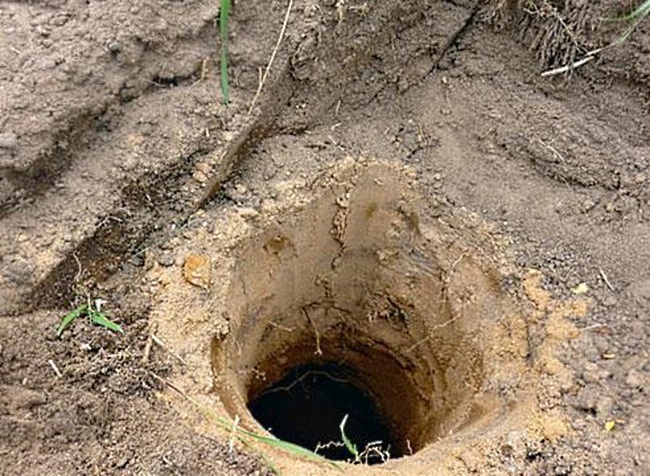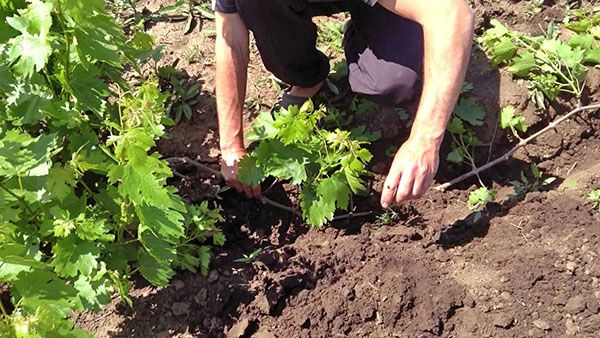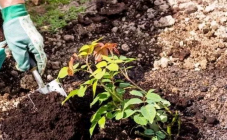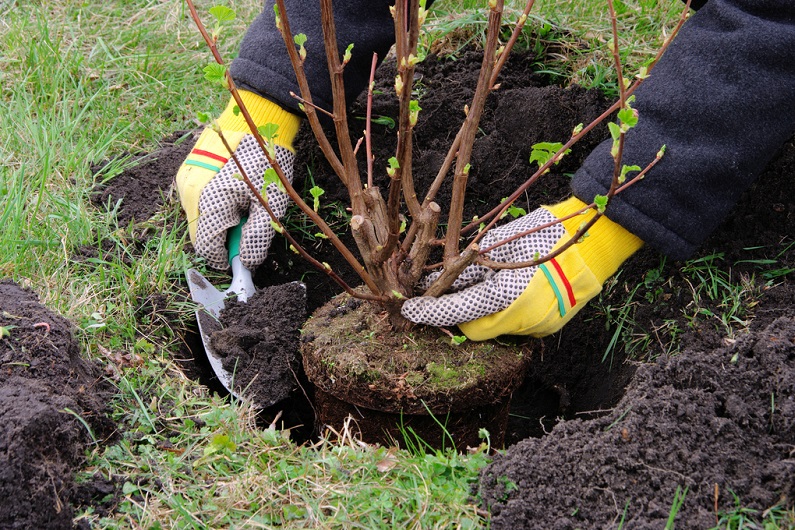Content:
Most experienced winegrowers are against grape transplanting. They are also supported by certified specialists who are qualified in the cultivation and breeding of new varieties of this berry. But there are situations when you cannot do without such a procedure.
To transplant grapes with minimal risk, you should adhere to a number of preparatory work requirements. This article will tell you how to transplant grapes to another place in the spring. Novice growers will also learn about the possible reasons for replanting the plant, and tips for follow-up care to speed up the process of living in a new place.
The tips given in the article are applicable both for cultivated fruit-bearing varieties and for decorative ones, which include, for example, the Devichiy variety.
Why transplant grapes
Of course, everything is clear with transplanting a young vine from a pot. The young plant is planted in its permanent habitat. But why transplant an adult grape bush that has been producing consistent yields for a year or even two? Quite often, the following reasons force such actions:
- Lack of experience when planting the first bush in life. The gardener does not know all the rules and subtleties for planting certain varieties and makes a number of mistakes that in the future may affect growth or yield. These can be poor wind protection, shade, unsuitable soil, etc. Over time, experience is added, which entails an understanding of not quite the right choice of place. Having picked up a good site, the owner decides to move the bush there.
- Another case when you still have to transplant grapes is the wrong planning of planting other plants. Young bushes and trees at the beginning of their life do not interfere with the vine. But in the future, their root system can take up nutrients and moisture, and the branches shade the area. In this case, only a transplant will save.
- Errors in the initial planting with a lack of distribution by varieties, rows and other important factors also require drastic intervention.
- Another possible option is to move to a new site. The owner, not wanting to part with his favorite variety, digs it up from the old place and takes it with him.
The first option is the onset of autumn, when the grapes shed their leaves, but before the start of frost. It is not quite suitable for the Moscow region and the northern regions, where winters are especially cold. Therefore, it is better to carry out all the work in the spring, before the buds swell.
It is quite difficult to answer the question of when to replant grapes. But for central Russia, the indicated period can be shifted until the onset of a warm pore, without frost. In the northern regions, this is the end of April - beginning of May.
In unforeseen situations, a transplant is possible even in summer. It is best to do the work in June.Such an operation will be quite stressful for the bush, so you need to take out the root with a large clod of earth, and transport it with maximum comfort for it.
Transplant tips
Transplanting grapes in a new place in spring usually takes place without serious complications due to its excellent survival characteristics. At the same time, it is necessary to take into account a number of factors that can negatively affect the survival rate or even lead to the drying out of the vine:
- You can not transplant a damaged bush.
- If there are many old vines and roots left, the plant may not take root.
- Early fruiting can negatively affect survival.
- Failure to comply with temporary regulations for transferring grapes to a new location.
Pests are no less dangerous for the grape bush in the new place. It can be affected by phylloxera or black cancer. Also, a weakened plant is practically defenseless against diseases. This is what stops many growers from transplanting. They are trying to find alternatives. But about them a little later.
Rules for transplanting young grapes
Before moving the vine to a new location, you need to carefully select this location. It should be borne in mind that the bush will grow here for many years, take into account all the accompanying factors. Otherwise, a situation is possible when the procedure will have to be performed again, which is very undesirable. A large sunny area, well protected from wind and drafts, is best suited for these purposes.
It is important to prepare the necessary tools and additional fertilizers. For the procedure of transferring a grape bush from inventory, you will need: a shovel to dig it out, and a pruner to cut off all that is superfluous. The transplanted grapes are fertilized with manganese solution and cow dung.
Step-by-step instructions for transplanting
To avoid unforeseen complications associated with violation of work rules, you need to adhere to the following tips:
- The transplant should begin with the preparation of the pit. Its depth and size depends entirely on the size of the root system and the earthy coma, which was preserved when the plant was dug up from the old place. At the bottom you need to pour mineral fertilizers and humus (from 6 to 8 kilograms). If the soil to which the young plant is transferred is rich in nutrients, the amount of humus and mineral additives can be reduced.
- When digging up the plant in a circle, you need to be very careful not to damage the root system of neighboring bushes (if any). The radius of the earthen coma left must be at least 50 centimeters. It is not necessary to dig up the entire root as it can be quite large. The main thing is to keep the strong young parts of the root. Excess soil from the rhizome is shaken off very carefully to avoid damage to the plant.
- After removing from the ground, the root system must be immersed in a clay solution with the addition of manganese. This step will prevent not only drying out, but also rotting.
- Any excess from the vine must be removed with a pruner. It is recommended to keep the two main sleeves. After the preparatory stage, you should place the bush in the hole and spread the root.
- Further, the pit is filled up, and the bush is watered abundantly with warm water.
It should be noted that, unlike young bushes, which bear fruit in the first year after transplanting without harm to growth, absolutely all ovaries must be removed on the old ones in the first season, and no more than a third should be left in the second. This procedure allows you to increase fruiting in the future.
Additional transfer information
One of the most painless options for replanting old bushes is not digging out, but using cuttings. Such a step will allow not only to rejuvenate the vine, but also guarantee the painlessness of the procedure and 100% survival rate.
To lay down one of the vines, separate and dig in. After a while, it will give its own roots. Thus, she receives useful substances not only from the mother bush, but also thanks to her own roots.
After two years, the rooted cut is completely ready for planting on a new site. This method is good both for transplanting, and for replacing a dried plant or grafting another variety.
In order to transplant a very old bush, which is more than 10 years old, but less than 20 years old, you need to use the katavlak method. It is similar to what is described above, but consists in cutting the entire bush, which is planned to be transferred to a new location.
This method of vegetative propagation is possible in early spring (in areas with prolonged winters, you should wait for the frost to recede). It consists in carrying out the following steps:
- A hole should be dug in the immediate vicinity of the bush. Free the root system from the ground, including the heel roots.
- The bush is placed in a ditch, the most powerful arm is selected from the entire root system, the vine remains in the trench, and the shoots are brought out. Thus, the vine takes root in both the new and the old place. Fruiting begins in the first year after transplantation.
- This method allows you to systematize the growth of a grape bush and make some adjustments in its planting. Give the vine more light, which means higher yields.
All of the above recommendations and planting methods will avoid problems when transferring a plant to a new site. At the end of the article, there are a few more recommendations from experienced gardeners.
A few tips
Summing up, we can conclude that the best time for transplanting is early spring or late autumn. But it is impossible to say the exact month due to the different climatic conditions in the regions. In order for the plant to take root better, you should follow the rules of planting and subsequent care for it. Care is quite simple and consists, first of all, in proper watering.
Immediately after planting, the vine needs to be watered once every 14 days, but if necessary, you can carry out the procedure more often. Top dressing is performed several times over the summer. Loosening of the soil and treatment from pests and diseases are also required. Without loosening, the soil will become too dense and the root system may suffocate. After the grape bush has fully mastered the new location, the frequency of watering can be reduced.
Thus, having learned about the nuances of transplanting grape bushes, you can build a competent work plan. This will minimize possible negative factors that prevent the plant from quickly adapting to a new place.
















